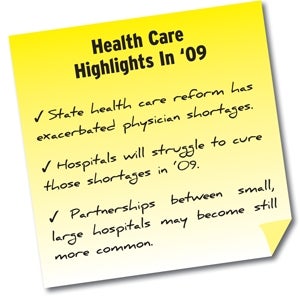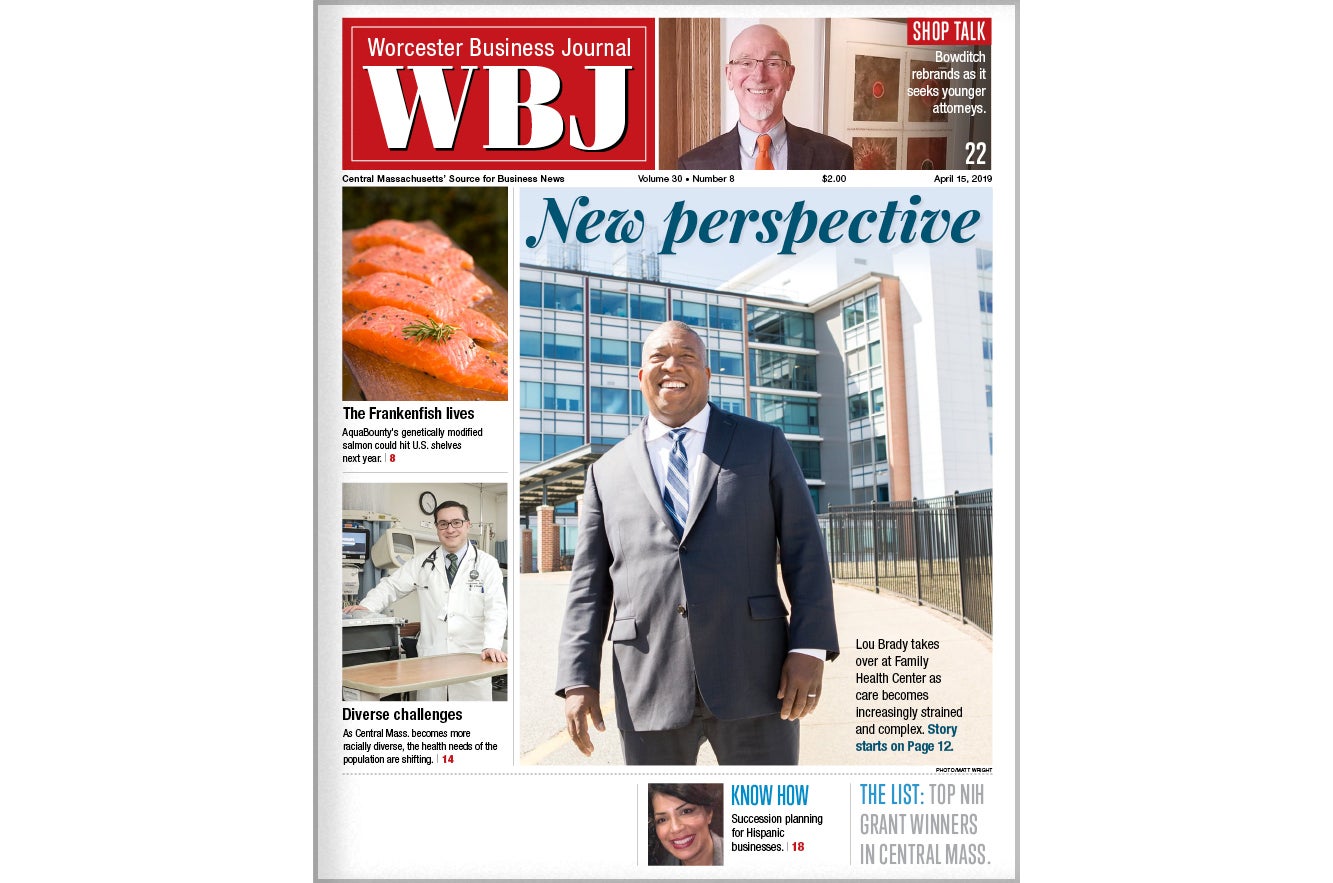Health Care Forecast: Sector Meets Universal Challenges | Longer waits, staff shortages came with mandatory coverage
The nation has been watching.
With all residents now required to have insurance under the state’s universal health care law, Massachusetts has been put under the microscope, and state officials expect that scrutiny to continue next year as President-Elect Barack Obama takes to the Oval Office and works toward mending the federal health care system.
It’s been a successful model so far, at least as far as subscriber numbers go: Roughly 97 percent of the state’s population is now insured. That’s compared with 89.6 percent in 2006, according to a recent report by the Blue Cross Blue Shield Foundation of Massachusetts.
But the landmark initiative has also highlighted a crucial need. All those newly-insured people are seeking out a rare and vanishing breed: primary care physicians.
Over the years, explained Ed Moore, president and CEO of Harrington Memorial Hospital in Southbridge, PCP numbers have dropped off as many doctors have been lured away to more lucrative specializations.
“They are a critical element to make us successful,” he said. “There’s a shortage. It’s very hard to find them.”
Bad Medicine
Indeed, according to a 2008 physician workforce study performed by the Massachusetts Medical Society, the average wait time for internal medicine is 50 days; family medicine, 36 days.
Similarly, more people are being shut out. The percentage of family medicine physicians no longer accepting new patients increased from 25 percent in 2006 to 35 percent in 2008; in internal medicine, that jumped from 31 to 48 percent over the same period.
“The success of health care reform in insuring hundreds of thousands more people is a great step forward,” said MMS President Bruce Auerbach, who is also vice president and chief of emergency and ambulatory services at Sturdy Memorial Hospital in Attleboro. “But it has put enormous pressure on primary care. We now know that insurance without access to care will not result in true health care reform, and that universal coverage does not equal universal access.”
But it isn’t just a confined problem; shortages span across the medical profession, according to officials. Other specialties in minimal supply include emergency medicine, general surgery, neurosurgery, orthopedics, psychiatry, urology, vascular surgery, oncology, neurology and dermatology, according to the MMS survey.
Exacerbating all this are rising rates of obesity and other chronic diseases that drive more and more patients into hospitals and doctors offices, Auerbach explained.
Combine the problems and you have not only longer wait times and tighter access, but less capacity, too, noted Edward J. Kelly, president of Milford Regional Medical Center. Inpatients can easily back up into the emergency department, precisely the problem that the universal health care law is intended to address.
“You need to be in front of the volume,” Kelly said.
The Tightening Belt
Local medical facilities have been doing what they can to stay there.
Milford, for instance, makes use of “hospitalists,” who are essentially primary care physicians for patients during their stay, treating them from admission to discharge. This program helps move patients through the hospital quickly and efficiently, Kelly explained, but at the same time without rushing them. To cater to additional patients, Milford also recently expanded from 250,000 to 325,000 square feet in a $45 million project; it added a $25 million cancer center, as well.
The University of Massachusetts Medical School, meanwhile, signed an agreement with Harrington that will help to expand the school’s primary care base. Through that agreement, Harrington will train a steady rotation of medical students. In turn, the Southbridge facility gets a boost with recruitment, Moore explained, as the collaborative designates it as a teaching site. With that distinction, it can be competitive and sponsor students on H-1B visas pursuing their medical degrees.
Larger hurdles to solving the provider shortfall include decreasing administrative burdens on doctors, fixing liability systems and lowering medical school debt so that PCP positions become more attractive, Auerbach said.
While all this is happening, medical centers have to dance a tango around ever-tightening budgets.
To keep its numbers in line, Harrington recently brought on a new chief financial officer who is critiquing and improving cash flow and examining all vacancies and positions, Moore explained.
“It’s important to find ways to be as efficient as possible,” he noted. “We have been very cost-conscious.”
Milford, meanwhile, experienced a slight positive margin in fiscal year 2008, less than 1 percent, Kelly explained. An increase in patients has helped provide extra padding. “We’ve been stable,” said Kelly. “We’re just trying to keep up.”
But it doesn’t look like the state will be throwing out many life preservers. “Obviously with the latest economy issues, we’re anticipating cuts,” said Kelly. He said he expects those will have a greater impact on urban hospitals than community hospitals. Ultimately, though, “it’s necessary that (all hospitals) be adequately funded,” he said.
However, as will likely be the case with many sectors in 2009, the economy could aggravate that, and not just at the state funding end. As the universal health care program continues next year, hospitals and doctors might face decreased reimbursements from patients due to unemployment or generally tight times, Moore said.
“In the long run, it’s better to have that many more people insured,” he said. But “the general economy is going to be a challenge.”
Taryn Plumb is a freelance writer based in Worcester.











0 Comments